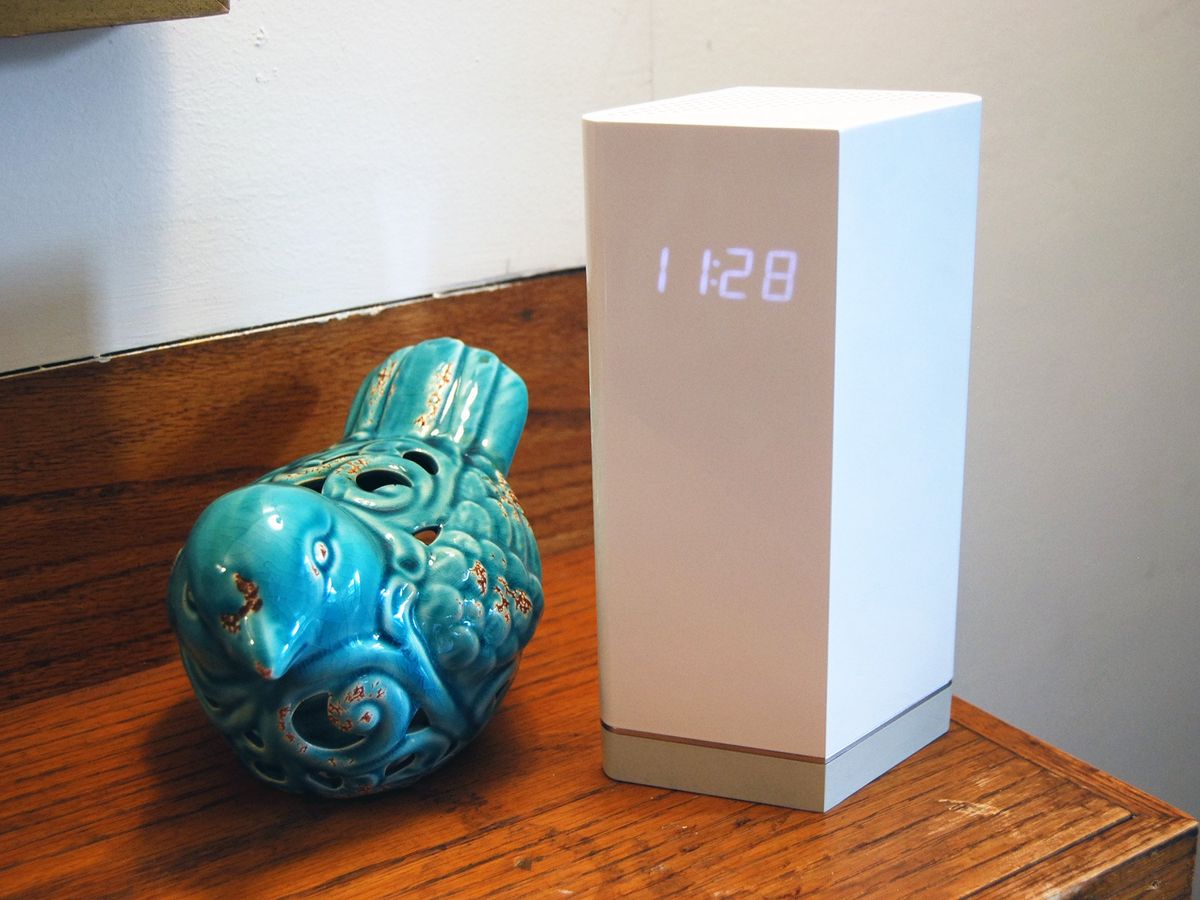
The internet is a wonderful, but dangerous place. There are perils seemingly around every corner, and as more and more of our devices become connected, it's not a bad idea to add some protection to your home network. Fridges, microwaves, light bulbs, washers, dryers — you name it — have an internet connection these days, and these devices can be hijacked for nefarious purposes.
Your PC no doubt has some antivirus software, but what about those other devices, including gaming consoles? F-Secure's SENSE is designed to protect all devices in your home at the router level, generally blocking threats before they make it into your network. I used SENSE for a few days to see how well it performs, how well it protects, and whether or not it's better than a standard router.
About this review
F-Secure provided Windows Central with a review unit of the SENSE Wi-Fi router. It costs about $175 for the single router.
F-Secure SENSE hardware and specs
| Category | Spec |
|---|---|
| Performance | AC1750450 Mbps + 1,300 Mbps |
| Frequency | 2.4 GHz, 5 GHz |
| Wireless standards | 802.11a/b/g/n/ac |
| Antennas | Four internal |
| Processor | 1 GHzDual-core |
| Memory | 512 MB RAM1 GB Flash memory |
| Ports | One USB-A 3.0 |
| Ethernet | One WANThree LAN |
| Bluetooth | 4.0 |
| Dimensions | 8.54 inches x 4.88 inches x 3.54 inches(217 mm x 125 mm x 90 mm) |
F-Secure SENSE design and features
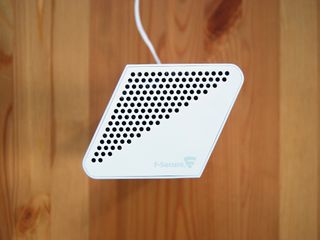
The F-Secure SENSE reminds me a lot of the Linksys Velop's white tower design, though here you get a bit more style, a display, and a glossy finish. It's shaped like a parallelogram with ports on the back, vents on the top, and otherwise a plain white exterior with a gray base. The digital display blends into the rest of the case when not in use, and displays certain codes needed for setup and local time when the router is being used.
There aren't any external antennas — there are four built into the router — for a clean look, and the overall build fits in well with other electronics or sitting on a mantle or shelf. Ports on the back include one WAN and three LAN for connecting your wired devices, plus a barrel power port. There's also a USB-A port, but it doesn't actually do anything, much to the chagrin of many SENSE owners.
F-Secure SENSE setup


The SENSE is quite easy to set up, but you will need either an Android or iOS app. The macOS and Windows apps used later for security purposes cannot be used for setup.
Everything you need is contained in the box, including power cord and Ethernet cable. You plug in the Sense to a wall outlet, connect it to your router, and bring up the app on your phone. The router will show a four-digit code that you enter on your phone, and from there it's pretty much handled automatically. You can set a name and password for the new secure network (which I recommend), and you'll most likely then have to wait a few minutes for a firmware update.
In total, it took about 10 minutes to get the SENSE network set up, which is not bad at all. From there, I began testing speeds around my house.
F-Secure SENSE performance
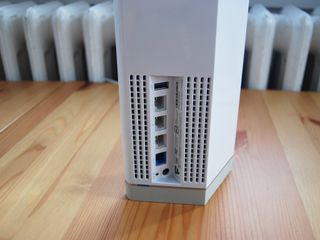
To test the performance of the router, I used Ookla's Speedtest to measure speeds in different locations around my house. I first tested about 10 feet from the router, again about 30 feet away in my office, and again in my basement in the furthest corner from the router, about 40 feet away. I also repeated the tests with my standard Hitron router that was provided by my ISP. My internet plan is rated at 250 Mbps download and 25 Mbps upload.
SENSE creates two different networks, one for each radio, and there's no smart switching between the two like you'd get from a mesh Wi-Fi setup.
F-Secure SENSE 2.4 GHz
| Location | Ping | Down speed | Up speed |
|---|---|---|---|
| Living room (10 feet) | 17 ms | 51.55 Mbps | 15.54 Mbps |
| Office (30 feet) | 11 ms | 34.88 Mbps | 16.01 Mbps |
| Basement (40 feet) | 29 ms | 15.72 Mbps | 8.49 Mbps |
F-Secure SENSE 5 GHz
| Location | Ping | Down speed | Up speed |
|---|---|---|---|
| Living room (10 feet) | 11 ms | 177.82 Mbps | 13.98 Mbps |
| Office (30 feet) | 11 ms | 102.95 Mbps | 16.00 Mbps |
| Basement (40 feet) | 10 ms | 72.99 Mbps | 12.83 Mbps |
Hitron 2.4 GHz
| Location | Ping | Down speed | Up speed |
|---|---|---|---|
| Living room (10 feet) | 11 ms | 80.39 Mbps | 16.23 Mbps |
| Office (30 feet) | 11 ms | 18.99 Mbps | 15.42 Mbps |
| Basement (40 feet) | 15 ms | 15.29 Mbps | 11.19 Mbps |
Hitron 5 GHz
| Location | Ping | Down speed | Up speed |
|---|---|---|---|
| Living room (10 feet) | 10 ms | 179.90 Mbps | 16.30 Mbps |
| Office (30 feet) | 10 ms | 64.02 Mbps | 16.26 Mbps |
| Basement (40 feet) | 13 ms | 13.32 Mbps | 11.41 Mbps |
Compared to my old Hitron router, the SENSE saw better speed at range on the 5 GHz radio and similar speeds across the board on the 2.4 GHz radio. F-Secure recommends placing the router near the middle of your living space, but for me, that's not possible. Take this as a not-quite-worst-case performance scenario. In any case, it's clear that it's enough to cover my 1,000 square-foot home. For much larger homes, range will no doubt become an issue, but most standard homes should be blanketed in a signal.
F-Secure SENSE security
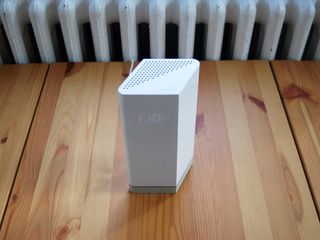
Unlike most routers that deliver data to your devices, SENSE is expected to also replace other security software you might have on your compatible devices. It uses a cloud-based system to scan for malware and other threats, protecting any devices connected to the router, including Internet of Things (IoT) setups with hardware that can't have extra software installed. For all devices, you'll also get anti-tracking, malicious URL protection, and a firewall alongside the anti-bot and IoT protection. Worried about your smart home being used for malicious purposes? SENSE can help.
On Windows and macOS, there's proprietary software that can be downloaded that acts more as an antivirus. You can install this extra software on up to 25 devices at once. The app has firewall and virus scan features, plus you can set up parental controls for the specific PC on which the app is installed. This app isn't necessary but is a nice perk on top of the protection from the router.
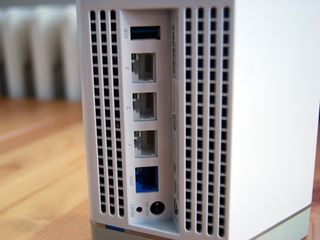
AVLab, which performs independent antivirus tests, used an Ubuntu-based system to test the effectiveness of the SENSE router at blocking threats to Windows 10. It set up 662 threats around the world, and all were blocked by the router before continuing to the PC. In the case of the antivirus, all 662 threats were again detected and removed before the infection could occur.
The router, app, and cloud security system provide protection that is invaluable as more devices connect to the internet.
I tested how well SENSE detects malicious websites, and whether or not it blocked me from visiting before damage could be done. I attempted to visit about twenty different sites confirmed to be malicious, and SENSE blocked them all in my browser.
The SENSE router comes with a one-year subscription to all these features, and after that, you'll have to shell out $XX per month. That extra cost might be a turnoff for some, but compared to some antivirus software, it's not that much to pay for the protection it offers.
F-Secure SENSE app and management
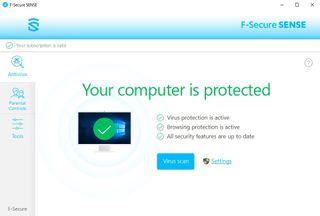
I used both the necessary Android app for setup and management, as well as the extra Windows security app to test ease-of-use and check out the features they offer.
The Android app is straightforward and easy to navigate, showing you on the front status tab how many devices are connected and protected, as well as how many threats were blocked since the last reset. The devices tab lets you select any device that's currently or has been connected, and from there you can block internet completely and see how many threats have been blocked for that specific device.
The final menu tab includes extra settings, an event log, privacy section where you choose what information is sent back to F-Secure, subscription status (that currently says "Active" with no mention of how much time is left), and a help option that brings up a text knowledge base. The extra settings are certainly not as in-depth as other routers, allowing you to toggle tracking and browsing protection, add website exceptions, and forward ports. You can likewise here change how bright the display is on the router and set the time, and finally, you can turn on a guest network, choose a channel for the 2.4 GHz and 5 GHz radios, and change network name and password.
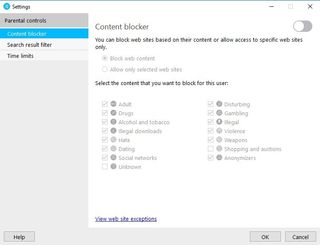
The Windows app can be installed by visiting a specific URL once your PC is connected to the SENSE router, and while it's not necessary, it is a useful tool for adding a bit of extra antivirus and firewall protection, as well as device-specific parental controls that include browsing content and time limits. It will also handle banking, browsing, and ransomware protection, which can all be toggled on or off. You can also set up scheduled times for antivirus scans.
Both apps are quite easy to navigate and shouldn't pose much of a problem for networking beginners, but I know more advanced users will miss some features that most other standard routers employ. For those who run into trouble, there is 24/7 chat and call support readily available. You also get a two-year warranty for the router.
F-Secure SENSE review: Conclusion
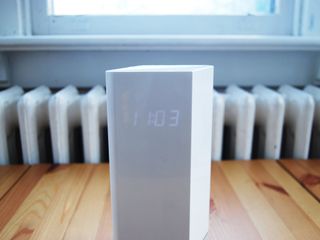
Pairing relatively excellent AC1750 performance — with a 5 GHz band that reaches quite far — and robust security for all devices connected to the router, I think the SENSE router certainly has a place in the market. It might not have all the perks and features that other routers have, but the protection it provides for your entire home certainly makes up for areas where it's lacking.
The subscription cost after the first free year runs out might deter some people, but considering the extra Windows and macOS software you receive on top of the protection that the router and cloud system provides, it should be worth the cost for those who need it.
Who should buy this router?
This $175 router is probably not the best buy for someone with an unintelligent home, myself included. Yes, I have quite a few devices connected to my router, but they're mostly capable of protecting themselves. However, if you do have a smart home that includes many devices that can't handle user-installed protection software, the SENSE becomes invaluable.
Pros
- Offers excellent security for all your devices
- Nice design
- Easy setup
- Great 5 GHz range
Cons
- Not a lot of management settings
- Requires Android or iOS for setup
- USB port doesn't support printer or storage

Cale Hunt brings to Windows Central more than eight years of experience writing about laptops, PCs, accessories, games, and beyond. If it runs Windows or in some way complements the hardware, there’s a good chance he knows about it, has written about it, or is already busy testing it.
